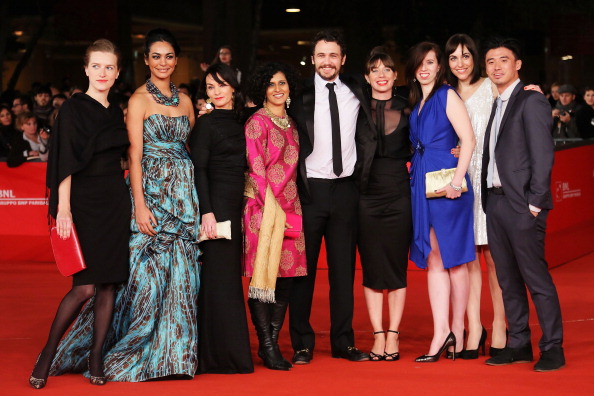Manohla Dargis is using her position as a critic of reckoning to write a series of articles on female filmmakers and their fight for equality.
The first one focused on Ava DuVernay and “Selma”. Everything I’ve seen and read about DuVernay says that she is incredibly pragmatic. From her keynote at Film Independent (where she urged filmmakers to focus on their work instead of getting desperate), to the fact that she was aware of set dynamics and managed the crew to ensure the set ran the way she wanted:
Movie sets can be very unfriendly spaces for women, as she knows. Before she started shooting, she recalled, she sat down with “every single person” on the crew and said, “I’m inviting you to work with me, so this is going to run in the way that I want it to run.”
The very fact that she got “Selma” made is credit to her. But as Dargis calls out, to make the leap to the big leagues, she had to make stories where the protagonists were men.
Notably, Ms. DuVernay and Ms. Jolie, having made movies about women, have now made the leap to bigger stakes with stories centered on men. I hope their movies burn up the box office, but I also hope they return to movies about women. We need those stories, and these days, female directors are often the only ones interested in them. Gender equality is an undeniable imperative. But it’s also essential to the future of the movies: This American art became great with stories about men *and* women, not just a superhero and some token chick.
Emphasis on the last sentence is mine.
While the first article focuses on one breakout director, the second article, paints a broader picture. Dargis covers women who’ve “made it” and then fallen off the map as directors as well as women who are producers.
This section about Amy Pascal is telling –
Among the female stories that Ms. Pascal helped shepherd earlier in her career was a lovely adaptation of that classic, “Little Women,” by Gillian Armstrong. Ms. Pascal had her share of critical and commercial successes, but those films were often also singled out for their subjects: women. In 2000, Variety predicted that Ms. Pascal’s forthcoming releases would “go a long way toward restoring some hormonal balance to the femme-heavy offerings marking her reign.” Movies like “The Patriot” and “The Hollow Man,” the article continued, as if to reassure anxious men everywhere, “will all provide a sharp blast of testosterone to the screen — and, it is hoped, a shot of adrenaline to the Sony ledgers.” That year, its biggest hit turned out to be the femme-heavy “Charlie’s Angels.”
Back in July I asked Ms. Pascal if those digs about the movies she made with women had affected her. She said that for a long time she felt “really embarrassed by that, because chick flicks are movies about girls who don’t work. They’re not really movies about girls who do. But then, everybody’s like, ‘Oh, that’s all she can do.’ So, maybe I overcorrected a little bit. Maybe I overcorrected and that’s not really a good thing to do.” She expressed excitement about some of the hits with female protagonists that had come out in the summer, though none were from Sony. “I think that the world has moved on,” she said, “and we’re not acknowledging it.”
As a producer, as a studio head, Pascal felt so much pressure to prove that she’s not “just” a woman, that she can make more than chick flicks, that she “overcorrected”. When was the last time a man appointed in a position of power had to examine whether he was perceived as making movies that are “too masculine” or “too action-packed” and overcorrect and make smaller, more sensitive movies? Pascal is one of the most powerful women in Hollywood and still she feels the pressure. The constant sexism and the repercussions of it are worth contemplating.
A facebook post recently drew my attention to this list of the top 20 cinematographers. #14 was “The women”. That is, all the women cinematographers grouped together. And the author’s explanation was that since no woman would make the list ((a very questionable claim)), he thought he’d make them one homogenous blob that would serve to highlight the problem of the lack of women. Could you imagine doing this to any other demographic? Yeah, this is the world we inhabit.
That is why we need Dargis’ articles. Because if she didn’t, no one else would.


